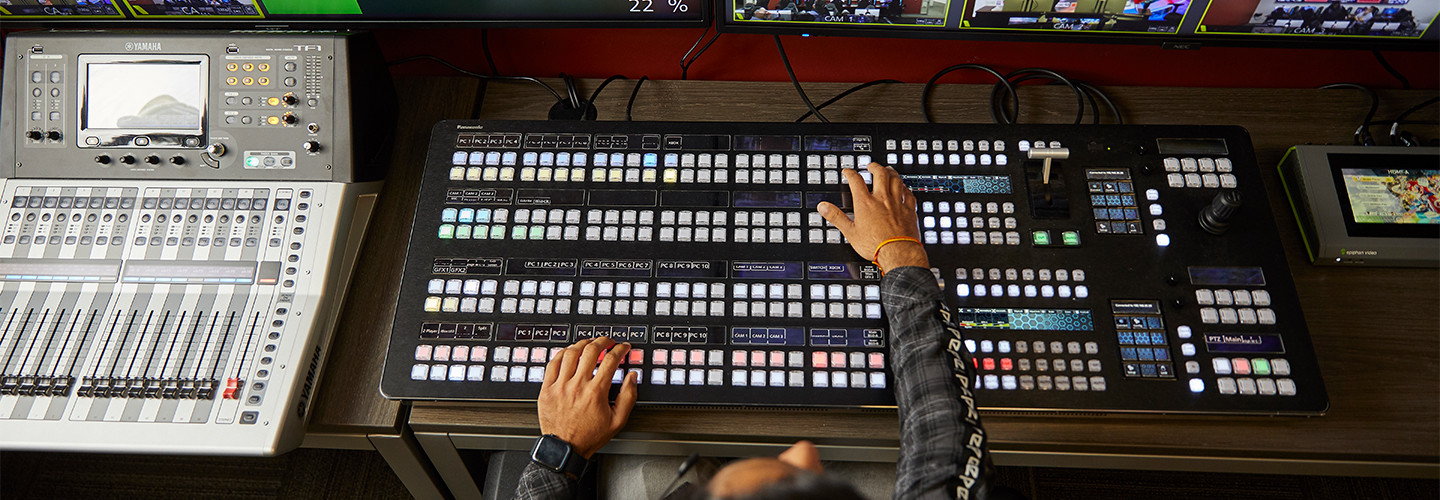Like USC, which opened its Digital Creative Lab this spring, colleges around the country are finding that esports facilities are for more than just gamers. The behind-the-scenes audiovisual and broadcasting work that brings the competitions to life has become as popular as the games themselves.
“We want to prepare our students for the workforce, and that means creating a sandbox within which they can participate,” explains Raj Singh, manager of learning technologies design and engineering at USC. “Our cinema school, our journalism school, they have broadcast-tier production studios, so when students go to work for companies, it’s an easy transition. We wanted that same experience. Having a space like this gives them the opportunity to hone their craft and take it to the next level.”
Some schools have esports majors, but students interested in the production side can come from a variety of fields, including business, engineering, IT, communications and broadcasting. They learn not only how to produce competitions but also how to manage and market them, says Singh. They can also showcase their work to viewers and companies that visit schools.
Indiana’s Ball State University opened its esports center in April 2021, more than five years after its student-run esports program began. “A lot of schools are developing esports programs because it’s in vogue,” says Dan Marino, Ball State’s esports director. “But as you start to dig deeper, there are more tangible benefits than just the fact that it’s a new shiny program to add to your campus. It’s an equalizer in that it can bring in people for an immersive learning opportunity who otherwise wouldn’t participate in traditional sports.”
READ MORE: University libraries are evolving to support future needs.
Universities Go Big to Create High-End Broadcast Production Facilities
The University of Akron has 6,500 square feet of space for esports, including a viewing lounge, a broadcasting area and a competition arena, but in 2017, when it was among the first schools to begin building esports facilities, there were few resources available.
“It was a lot of trial and error, a lot of learning by doing,” recalls UA Director of Esports Nate Meeker. “Now there are tutorials that make it a lot easier.”
The center of any esports program is the gaming equipment — high-end computers and consoles such as the Nintendo Switch, Microsoft Xbox and Sony PlayStation — but broadcasting and production equipment is equally essential, he adds. UA uses Corsair Elgato cameras, lighting and gaming broadcast cards.
